Trump to impose 100% tariff on China starting November 1
Introduction & Market Context
Liquidity Services, Inc. (NASDAQ:LQDT) released its third quarter fiscal year 2025 investor presentation on August 7, 2025, showcasing strong financial performance across key metrics despite a negative market reaction. The company, which operates digital marketplaces for surplus assets, reported significant growth in revenue, GMV (Gross Merchandise Volume), and adjusted EBITDA, yet saw its stock decline 4.75% to close at $23.67.
The company positions itself as a leading global commerce company powering the circular economy, with a total addressable market of over $130 billion across transportation, retail, industrial capital assets, public sector, and energy segments. Liquidity Services facilitates the reuse, repair, and recycling of existing materials and products, creating value for both sellers and buyers while promoting environmental sustainability.
As shown in the following illustration of the circular economy process, Liquidity Services plays a key role in extending product lifecycles:

Quarterly Performance Highlights
Liquidity Services reported impressive financial results for Q3 FY25, with revenue reaching $120 million, a 28% increase year-over-year from $94 million in Q3 FY24. The company achieved record GMV of $413 million, up 9% from $380 million in the same period last year. Adjusted EBITDA rose to $17.0 million, a 16% improvement from $14.7 million in Q3 FY24.
The following charts illustrate the company’s consistent growth trajectory across key financial metrics:
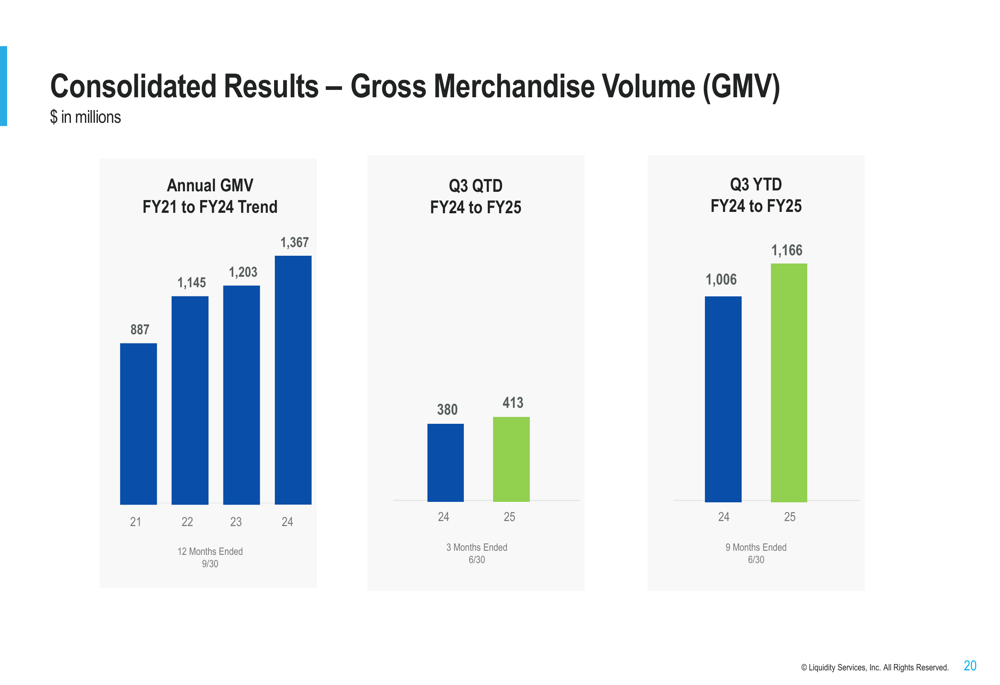
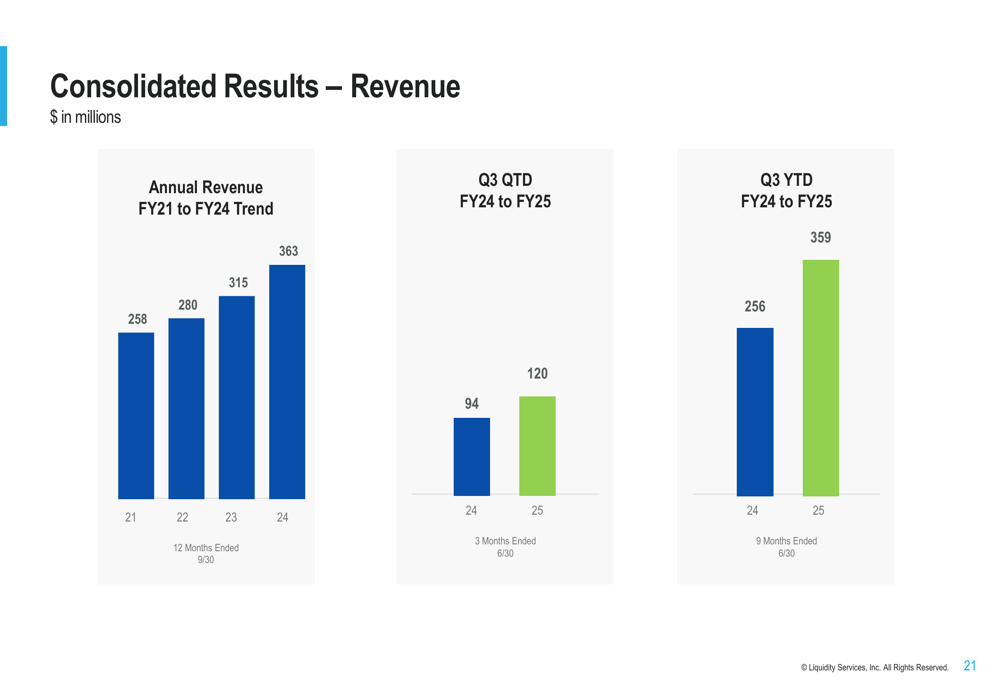
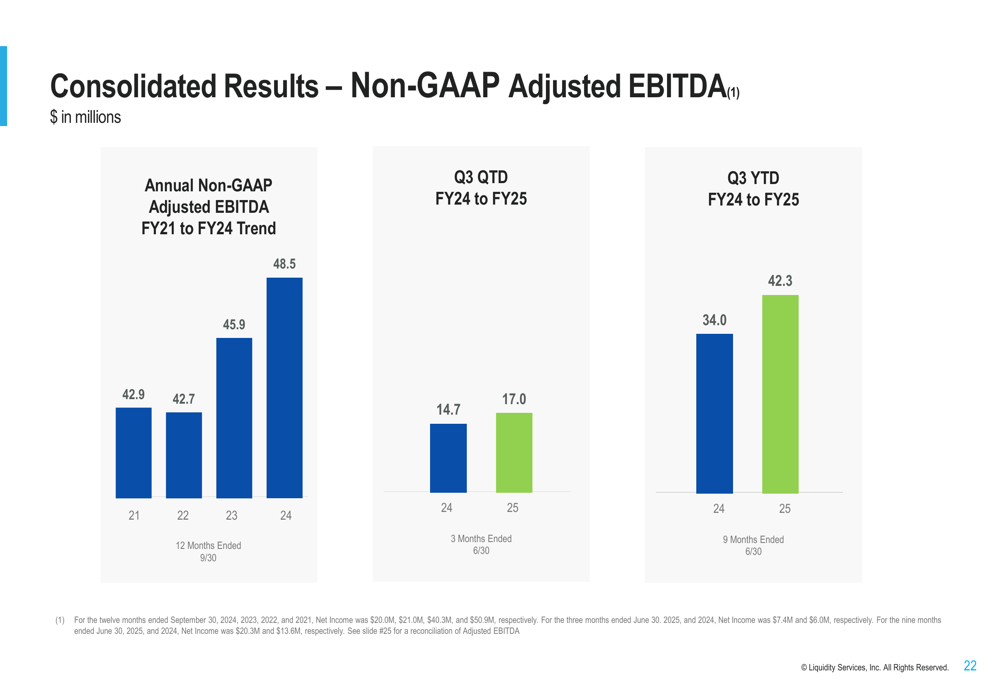
The company’s marketplace success metrics for Q3 FY25 further demonstrate strong operational performance, with buyer registrations, completed transactions, and auction participants all showing healthy growth:
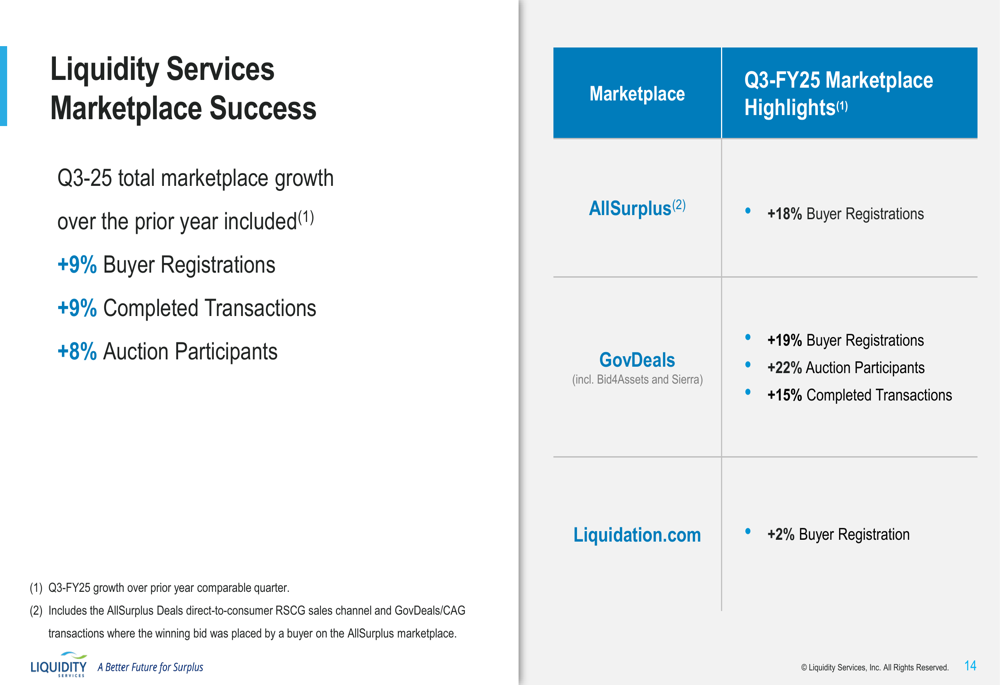
Despite these positive results, Liquidity Services’ stock fell 4.75% on the day of the earnings release, closing at $23.67. According to the earnings report, the company exceeded both EPS and revenue forecasts, with a non-GAAP adjusted EPS of $0.34 against a forecast of $0.33, and revenue of $119.9 million compared to the expected $88.7 million.
Segment Performance
Liquidity Services operates through three main segments: GovDeals, Retail Supply Chain Group (RSCG), and Capital Assets Group (CAG). The GovDeals segment, which serves government agencies, continues to be the largest contributor at 61% of total GMV in Q3 FY25, though slightly down from 65% in Q3 FY24. The RSCG segment, serving retailers and manufacturers, increased its share from 21% to 25%, while CAG maintained its 14% contribution.
The GovDeals segment showed strong performance with GMV reaching $252.3 million in Q3 FY25, up from $249.7 million in Q3 FY24, as government agencies increasingly adopt digital marketplaces:
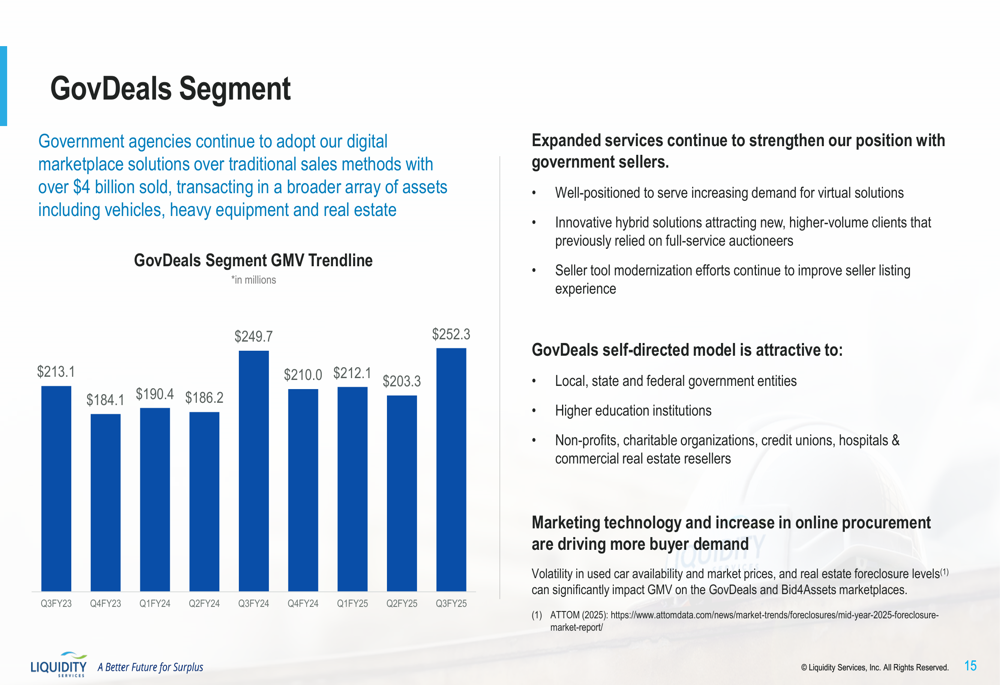
The RSCG segment also demonstrated significant growth, with GMV of $102.6 million in Q3 FY25 compared to $78.9 million in Q3 FY24, driven by retailers seeking B2B marketplace platforms for surplus inventory:

The company’s business model continues to shift toward consignment, which represented 83% of GMV in Q3 FY25, down slightly from 86% in Q3 FY24, with the purchase model accounting for the remaining 17%, up from 14%.
Strategic Initiatives
Liquidity Services’ strategy centers around its "RISE" framework: Recovery Maximization, Increased Volume, Service Expansion, and Expense Leverage. This approach aims to create a virtuous cycle of growth by connecting more buyers and sellers, increasing transaction volume, and improving recovery rates.
The following diagram illustrates how these strategic pillars interact to drive profitable growth:
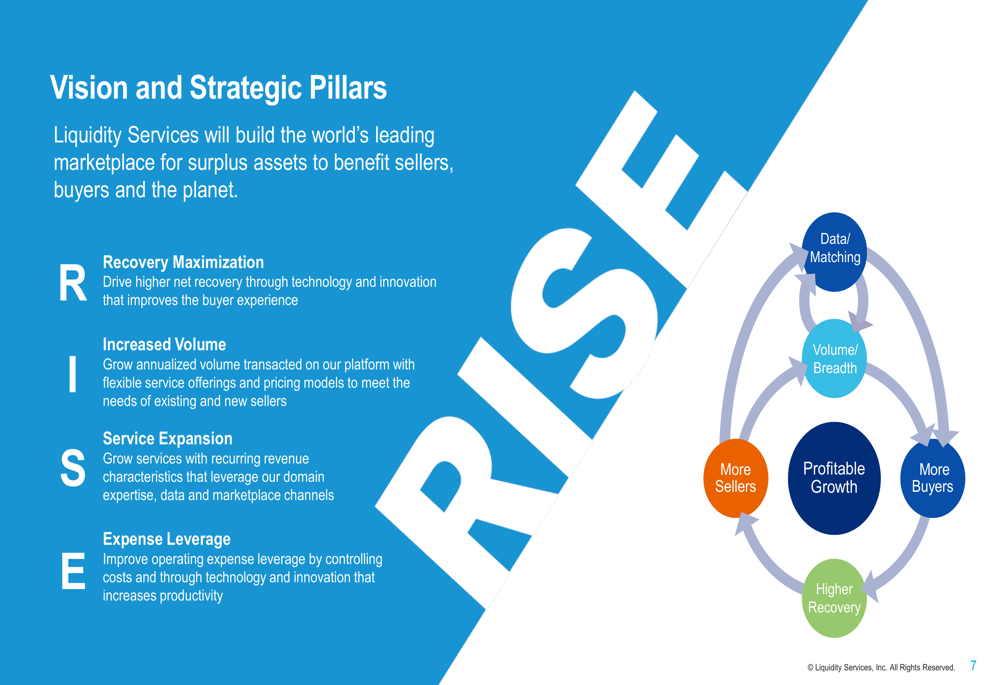
The company’s market opportunity remains substantial, with a $130+ billion total addressable market across multiple sectors. Liquidity Services serves over 15,000 clients worldwide, including 130+ Fortune 1000 companies, and has 5.9 million registered buyers across more than 100 countries.
The company’s market position is supported by several key statistics that demonstrate its scale and reach:
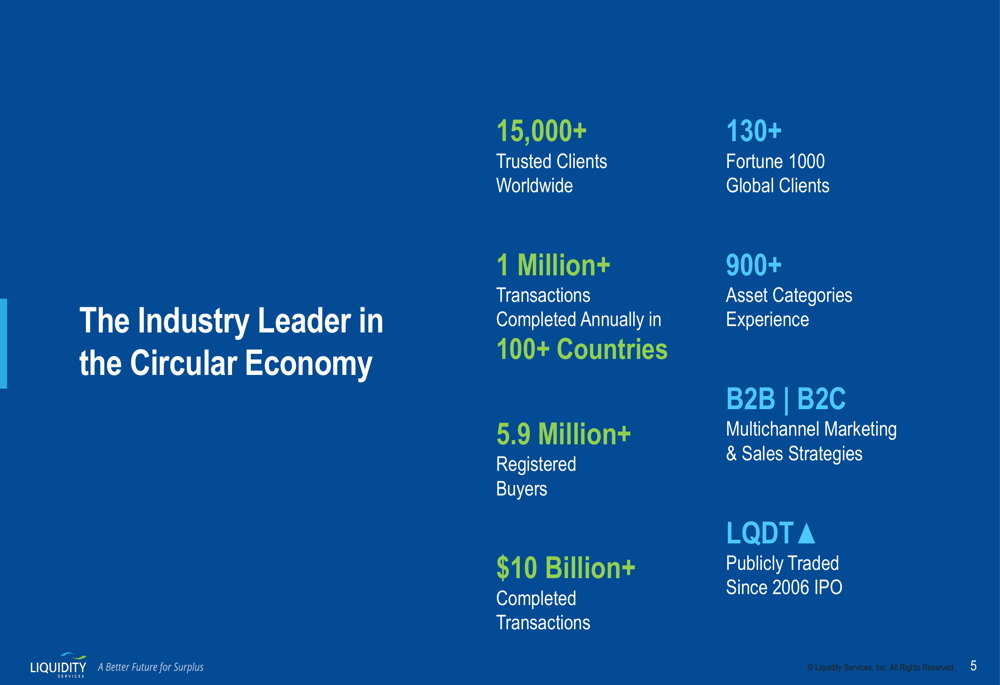
Macro-trends including e-commerce growth, technology innovation, and sustainability are expanding Liquidity Services’ opportunities. The increasing focus on environmental sustainability and the circular economy aligns with the company’s business model, which extends the life of assets, increases reuse and recycling, prevents waste, and ensures environmentally safe disposal.
Forward-Looking Statements
According to the earnings report, Liquidity Services expects continued growth, projecting Q4 GMV of $355-$390 million and a non-GAAP adjusted EPS between $0.24 and $0.34. The company remains optimistic about its expansion in the GovDeals, Capital Assets, and Software (ETR:SOWGn) Solutions segments.
CEO Bill Engrich expressed confidence in the company’s strategic direction, stating, "We are well positioned to seize emerging opportunities to drive profitable long-term growth even in uncertain times." CFO Jorge Celaya highlighted the company’s sustained growth and margins, aligning with their "rule of 40" objective.
However, potential challenges include international market uncertainty due to tariffs, intense competition in the e-commerce marketplace, and macroeconomic pressures that could affect buyer sentiment. The company’s transition from a purchase to a consignment model, while beneficial long-term, may also present operational challenges.
Despite these risks, Liquidity Services’ strong financial position, with $167 million in cash and no debt as reported in the earnings call, provides a solid foundation for continued growth and investment in its digital marketplace platforms and technological capabilities.
Full presentation:
This article was generated with the support of AI and reviewed by an editor. For more information see our T&C.
